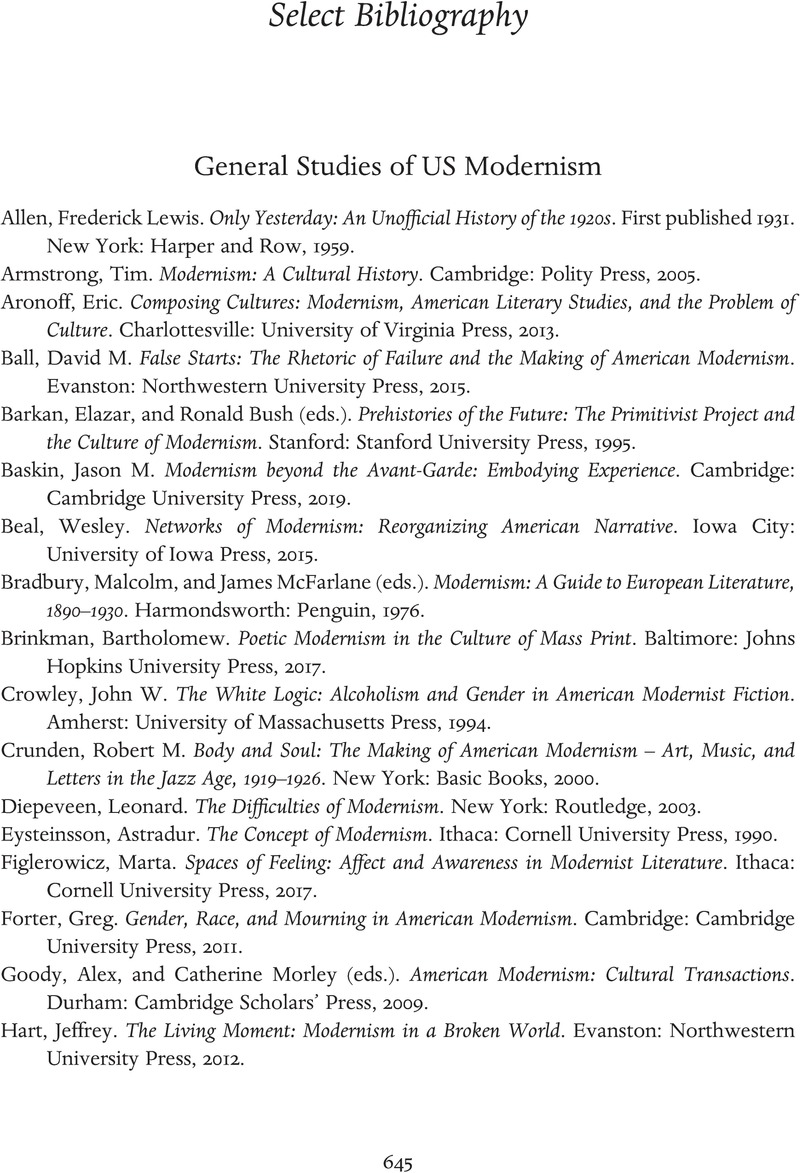Book contents
Select Bibliography
Published online by Cambridge University Press: 13 July 2023
Summary

- Type
- Chapter
- Information
- The Cambridge History of American Modernism , pp. 645 - 698Publisher: Cambridge University PressPrint publication year: 2023

